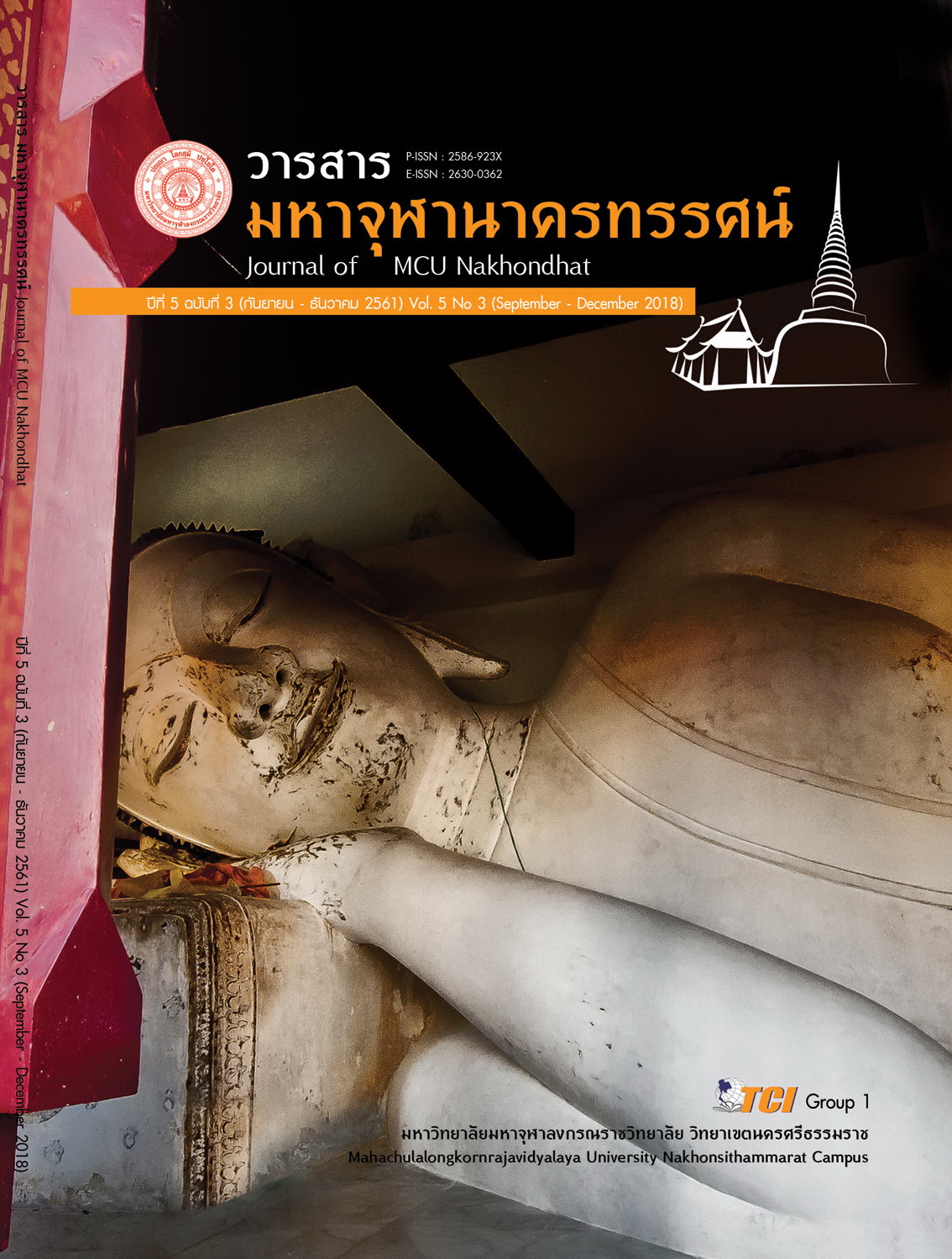A MODEL OF THE BUDDHIST INTEGRATED MEDIATION: A CASE STUDY OF THE JUVENILE AND FAMILY COURT.
Main Article Content
Abstract
The article is part of the dissertation on “A Model of The Buddhist Integrated Mediation: A Case Study of The Juvenile and Family Court,” has three objectives: 1) to study relevant concepts and theories in mediation of disputes in the juvenile and family court, 2) to study problems, obstacles and relevant Buddhadhamma in the process of mediation of disputes in the juvenile and family court, and 3) to examine a model for mediation of disputes in the juvenile and family court. This research employed documentary research and personal interview.
The results show that the mediation of disputes is based on the idea that the court performed the following functions: 1) coordinate the negotiation between both parties in person to reconciliate and end the dispute, 2) facilitate the mediation, 3) act as an liaison between the disputing parties, 4) conciliate the disputes to make both parties aware of the mutual benefit of solving the problem, 5) operate and oversee the mediation process based on the circumstances of the case as the court sees fit, 6) make sure that the role of the mediator different from that of the judge or the person appointed as an arbitrator, 7) assist in establishing a compromise agreement. For the problems and obstacles in mediation, it was found that the main problem had to with bigotry, sole desire to win, and insinuation from surrounding people not to enter mediation. The external factors include lawyers and influential relatives of the claimants. These obstacles lead to failures in mediation. For a model of mediation of disputes in the juvenile and family court, it was found that the principles of Agati4 (prejudices), Brahmavihara4 (holy abidings), Sangahavatthu4 (bases for social solidarity), Ariyasacca 4 (noble truths) could be used to overcome the stated obstacles and increase the chances of success for the mediation.
Article Details
References
ปรีชา อุปโยคิน. (ปีที่ 8 ฉบับที่ 3/2538). แนวการวิเคราะห์ปัญหาความรุนแรงในครอบครัว. วารสารสุโขทัยธรรมาธิราช, 99-107.
ภาสุรี เอี่ยมทิม. (2548). ทัศนะของคู่สมรสในชุมชนเมืองต่อแนวทางการป้องกันและแก้ไขปัญหาความรุนแรงในครอบครัว. วิทยานิพนธ์มหาบัณฑิต: บัณฑิตวิทยาลัย มหาวิทยาลัยธรรมศาสตร์.
สำนักงานกิจการสตรีและสถาบันครอบครัว.(n.d.). (18 กุมภาพันธ์ 2560). รายงานสถานการณ์ความรุนแรงในครอบครัว. เข้าถึงได้จาก http://www.violence.in.th/publicweb
สำนักพัฒนาระบบบริการสุขภาพ. (2549). แนวทางปฎิบัติช่วยเหลือเด็กและสตรีที่ถูกกระทำรุนแรงในเครือข่ายระดับจังหวัด. นนทบุรี: พระธรรมขันธ์.
อภิญญา เวชยชัย. (2546). สภาวการณ์ของเด็กเยาวชนและครอบครัวและข้อเสนอแนะเชิงนโยบาย. กรุงเทพมหานคร: โรงพิมพ์มหาวิทยาลัยธรรมศาสตร์.

